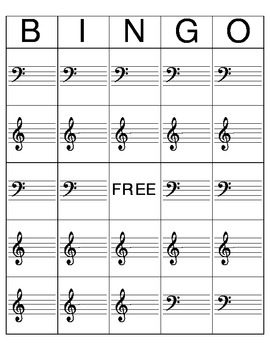Bingo Packet
Our Bingo Cards and Packs Resource page gives you a description of a bingo face, explains the bingo perms available, where to find serial #’s and defines bingo paper packs.
This editable Homework Bingo resource is an easy-prep solution for families that request regular homework! Homework Bingo is available in PDF and digital versions, perfect for classroom or distance learning!Included in this package are:✅ 22 no-prep, ready-to-go bingo and home learning cards for each. The Fitness Bingo packet provides you with a fun and organized movement-based activity that your students will absolutely love!!!The Fitness Bingo packet comes. Mar 28, 2020 - I'VE GOT BINGO!!!Are you looking for a great way to truly engage your students in a fun-filled, warm up, brain break or PE fitness activity?
Introduction
Bingo cards are comprised of 24 numbers and a free space. A single bingo card is referred to as a “face.” There are 5 vertical columns on each card or face corresponding to the letters B – I – N – G – O.
The B – Row contains, in any order, the numbers from 1 – 15. The I – Row contains, in any order, the numbers from 16 – 30. The N – Row contains, in any order, the numbers from 31 – 45. The G – Row contains, in any order, the numbers from 46 – 60. The O – Row contains, in any order, the numbers from 61 – 75.
Permutations
Each bingo card is different from every other card by changing the numbers under a vertical row(s) so that the same exact numbers do not appear on more than 1 card. This is referred to as a permutation.
The possible arrangement of numbers on each card is practically limitless. In fact, the possible number of cards has been calculated to be:
552,446,474,061,129,000,000,000,000 of which 4,976,640,000 have the exact same 24 numbers, but in a different arrangement. If you could print one million cards per second it would take 17,505,972,382,599 years to print every possible card!
There have been literally millions of bingo cards designed by multiple manufacturers. In order to keep track of this multitude of cards, they are numbered which is the number that appears in the “FREE SPACE.” In general, card number 1 (free space #1) will always be identical to other card #1’s in that the exact same numbers will appear in exactly the same place on each card. The exception to this rule is that different manufacturers have designed their own unique cards.
Serial Numbers
Originally called “throw aways”, bingo today is played on disposable, newsprint bingo paper. There are approximately 30 different colors of bingo paper. There can be as many as 36 cards on a single sheet and cards are commonly manufactured and sold in lots of 9000 cards. Each lot is referred to as a “case” or “case equivalent.” Bingo manufacturers (printers) will print thousands of cases of bingo cards, by color, in a single press run. Similar to the free space number, these cases must be identified by a number that is called the “SERIAL NUMBER.” This number is a 6 – 8 digit number printed at the very top of each bingo card. The serial number is different in each case that is manufactured. This allows the manufacturer AND game managers to track each individual case of paper. For example, two different bingo games may be playing the same color of paper, but the serial numbers will be different.
Paper Packs

Recall that a single bingo card is also called a “face.” It is also called a “1 on” which identifies how many cards are “on” a single sheet of paper. Nearly all bingo games sell paper that has 3, 4, 6, or 9 cards “on” a sheet.
Bingo paper is typically sold by the bingo game in the form of a pack or booklet of different colored sheets glued together at the top (similar to a notepad). Each color is a different game of bingo. The sheets in a pack or booklet are called the “up,” meaning a 5 game booklet is called a 5 up, 10 games would be a 10 up etc. Combining the number of cards per sheet (“on”) with the number of sheets in the pack (“up”) provides everyone with a complete description of what is being used at a particular bingo game. For example:
6 on 15 up – 6 cards per sheet, 15 different colored sheets or games in the pack
9 on 10 up – 9 cards per sheet, 10 different colored sheets or games in the pack
Non-profits have been innovative, seeking creative ways to raise money through outdoor events. Growing in popularity is Car Bingo. Like drive-in movies, Car Bingo allows players to be entertained from the comfort of their vehicle. Car Bingo eliminates the need for tables and chairs, making set-up for this type of event easy. In some locations, food, drink, and other entertainment is available on site.
Themed bingo events, such as “Purse Bingo” or “Designer Bag Bingo” have gained popularity throughout Michigan. Each player attending is charged a set fee to participate. For example, a fee of $30-$50 could include 7 to 10 bingo games and a small meal or snacks.
Traditionally, bingo players come for the duration of the event, paying a cost that allows them to participate in all the regular games that will be played.
Bingo Packages
Paper Bingo Packets
A Special Bingo License costs $25 and is good for up to seven consecutive days.